求助
Lucky Coyote
2017年06月05日

I found these stunning wild succulents on a hiking trip today 😸 naturally I brought some back, I only nabbed a few of the small rosettes, no flowers, any ideas on what they are? On the Brice Creek trail in Cottage Grove, OR if anyone wanted to know as well

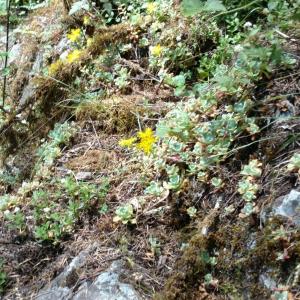
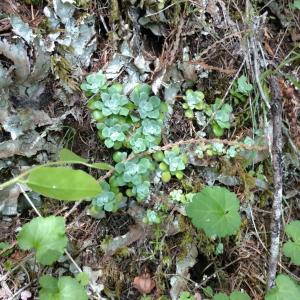
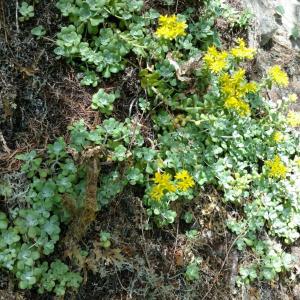
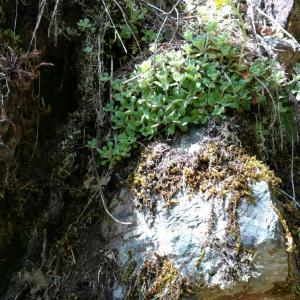
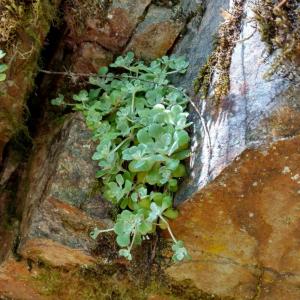












3
0
Lucky Coyote:@Ueca Ohmygawd it's so amazing on the trail, you should go one day 😸
Ueca:😔🙏 my next dream vacation spot 🙏😔
求助
rologirl
2017年05月29日

Can anyone tell me what kind this is? The flowers close at night, if that helps
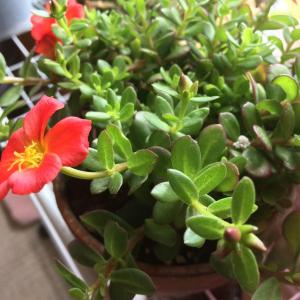
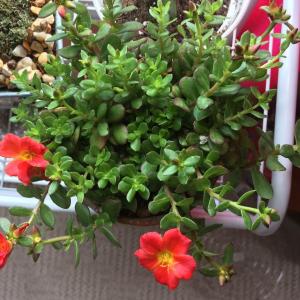


2
0
rologirl:Never mind! It's a Portulaca grandiflora(Mojave tangerine purslane), I forgot I had the sticker haha
成长记
Elena Galkina
2017年05月24日

This is the 3rd. Its flowers look smaller and darker, with more visible white border. But still great!
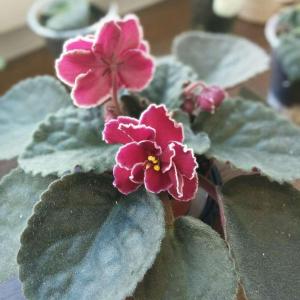

2
0
文章
安静的美女子
2017年05月23日

Learn how to make christmas cactus bloom at christmas or in holiday season by following these tips.
A Christmas cactus in full bloom creates a warm atmosphere during the holidays. Red, pink, white or orange: Its lovely flowers brighten up any interior. If maintained well, it can even bloom again from one year to another for years.
6 Tips to Make a Christmas Cactus Bloom at Christmas
You can make Christmas cactus bloom at Christmas or in Holiday season if you follow these tips. You’ll need to follow the process for at least 6 weeks to make it bloom at time.
1. Location
To force it to flower, tuck your Christmas cactus indoors. Ideally, it should be kept at a temperature around 60 F and make sure it does not go up or down too much, until the first flower buds appear. During this period, the Christmas cactus needs total darkness of 15 hours and 9 hours of bright indirect light. Why so? It is a short day plant and it blooms in such conditions. Make sure that location in which you are placing christmas cactus is fulfilling both light and temperature requirements. Also make sure that is does get complete darkness for at least 14 hours, which means not even smallest lamp or source of light reach it during this period.
2. Watering
Keep the plant slightly thirsty. Water it sparingly until the appearance of the first flower buds: Soil must be dry between watering spells but not too much otherwise forming buds will drop.
After it has formed buds, water it regularly to promote more blooms, also make sure not to overwater as it can also cause bud drop.
3. Humidity
Christmas cactus require about 50 to 60 percent humidity. Use the humidifier to raise the humidity in the room. If you don’t have a humidifier place a tray of water next to it. A humidity tray is good method of providing the humidity the Christmas cactus requires. This is done by filling a waterproof saucer with gravel, then adding water halfway up the gravel. Place the pot on the gravel surface.
4. Do not move
Remember the buds and flowers of this plant are very fragile, so it is better not to move the plant here and there.
5. Pruning
Wait until the end of flowering period, before you start pruning.
6. Repotting
Set in a large pot, the Christmas cactus has tendency to bloom less often. It is therefore recommended to keep the plant slightly root bound. Repot it in every 3 year or so. Choose a slightly larger pot than the previous one.

A Christmas cactus in full bloom creates a warm atmosphere during the holidays. Red, pink, white or orange: Its lovely flowers brighten up any interior. If maintained well, it can even bloom again from one year to another for years.
6 Tips to Make a Christmas Cactus Bloom at Christmas
You can make Christmas cactus bloom at Christmas or in Holiday season if you follow these tips. You’ll need to follow the process for at least 6 weeks to make it bloom at time.
1. Location
To force it to flower, tuck your Christmas cactus indoors. Ideally, it should be kept at a temperature around 60 F and make sure it does not go up or down too much, until the first flower buds appear. During this period, the Christmas cactus needs total darkness of 15 hours and 9 hours of bright indirect light. Why so? It is a short day plant and it blooms in such conditions. Make sure that location in which you are placing christmas cactus is fulfilling both light and temperature requirements. Also make sure that is does get complete darkness for at least 14 hours, which means not even smallest lamp or source of light reach it during this period.
2. Watering
Keep the plant slightly thirsty. Water it sparingly until the appearance of the first flower buds: Soil must be dry between watering spells but not too much otherwise forming buds will drop.
After it has formed buds, water it regularly to promote more blooms, also make sure not to overwater as it can also cause bud drop.
3. Humidity
Christmas cactus require about 50 to 60 percent humidity. Use the humidifier to raise the humidity in the room. If you don’t have a humidifier place a tray of water next to it. A humidity tray is good method of providing the humidity the Christmas cactus requires. This is done by filling a waterproof saucer with gravel, then adding water halfway up the gravel. Place the pot on the gravel surface.
4. Do not move
Remember the buds and flowers of this plant are very fragile, so it is better not to move the plant here and there.
5. Pruning
Wait until the end of flowering period, before you start pruning.
6. Repotting
Set in a large pot, the Christmas cactus has tendency to bloom less often. It is therefore recommended to keep the plant slightly root bound. Repot it in every 3 year or so. Choose a slightly larger pot than the previous one.
2
1
文章
小马奥
2017年05月23日

Learn about the Best Plants For Hanging Baskets. Hanging baskets filled with colorful flowers and plants are very showy and elegant and adorn any garden. You don’t need a lot of space to display them, too!A variety of flowers and plants can be grown in hanging baskets. The choice of plants in baskets depends on both the size of the basket and the growing conditions where the basket has to be placed. The baskets, which are kept in the shade and less windy space are easier to look after as they require less watering.Nasturtium

If you are looking for a quick growing and low maintenance plant, nasturtium is the plant you should consider. The trailing varieties of nasturtium work especially well and it is one of best plants for hanging baskets. Nasturtium loves the warmth and sun, though they can tolerate partial shade. They prefer poor soil and doesn’t need much fertilizer.
Petunia

Petunia is one of the most popular flowers and best plant for hanging the basket. It covers hanging basket quickly and blooms profusely. There are many varieties of petunias that come in myriads of colors including black.
Tomatoes

Growing tomatoes (cherry tomatoes) in hanging baskets is an apt way to use vertical space, plus they adapt easily unlike other vegetables. Basically, your success in growing tomatoes depends on three factors— yours choosing right variety, basket, and providing it appropriate conditions, if you satisfy all of the three, you’ll get rich homegrown tomatoes in harvesting season. Learn how to grow tomatoes in a hanging basket.
Also Read: How to Grow Tomatoes on a Balcony
Portulaca

Portulaca or moss rose is an excellent trailing ground cover plant, not only the colorful flowers, its needle-like succulent foliage looks wonderful too. This tropical beauty can be grown as an annual plant in non-tropical places and as a perennial in tropics in both containers and hanging baskets.
Begonia

Begonias are the perfect plant for shady places. It blooms continuously in summer and fall and in shades of pink, red and white. The best Begonias for hanging baskets are trailing varieties. Begonias require moist soil, however, you shouldn’t not over water begonias, as the plant is susceptible to root rot.
Philodendron and Spider Plant

Both the spider plant and species of philodendron are considered as houseplants, but they can also be grown outdoors in protected conditions. They do better when grown alone in a hanging planter. Spider plant forms a rosette or grouping of the bush like light green and white variegated foliage.
Philodendrons have solidly light green or variegated, waxy, heart-shaped leaves and have a vine like growing habit. They require indirect sunlight and grow well in the shade outdoors or in low light, indoors.
Diascia

Diascia is another hanging basket plant that you can grow. This short-lived perennial is often grown as an annual, it is hardy in warmer zones (USDA Zones 9-11), however, some varieties are hardy down to Zone 7. Its beautiful colorful flowers are rather small, of bright colors and appear in clusters from spring to fall.
Geranium

The Geranium is another plant that can be grown in baskets. Both the foliage and flowers are beautiful. Geraniums prefer a sunny spot and well-draining soil to flower.
Verbena

It is possible to grow verbena in a hanging basket, this sun-loving plant is suitable for South facing places. Verbenas come in a variety of colors and shades including pink, purple, white, red and lavender etc. The cluster of flowers blooms continuously throughout the summer in a cold climate. Whereas, in tropics verbenas are perennial.
Fuchsia

Fuchsia is an elegant and colorful flowering hanging basket plant that prefers shade and cool summers. Flowers from over 120 varieties of fuchsia plants can grow to a length of 4 inches. The trailing stems cascade out over the hanging basket with a mass of colorful flowers. Fuchsia flowers are often deep pink or orange with purple or white vibrant trimmings.
Impatiens

The impatiens grow best in shade space and in moist soil. It comes in a variety of colors including salmon, cherry, pink, white and lavender. If growing in baskets, apply a balanced fertilizer in every two to three weeks. Impatiens grow very easily from seed and cuttings.
Dianthus

Dianthus comes in over 300 varieties and usually grown as an annual. This well-known flower is good for borders, ground covers, for cut flowers and several species are compact enough for planting in the hanging baskets, offering a profusion of flowers during the summer.
Ivy

Evergreen, perennial plant, ivy comes with a variety of leaf shapes and variegated foliage types. It is a perfect plant that provides a background for the gaudiest colors. It trails gracefully in hanging baskets. Most ivy varieties thrive inside the home, as they do not require direct sunlight and only need minimal care. However, it grows outside easily in shade.
Pansy

Pansies are a fast growing plant that provides masses of beautiful flowers during the summer in many shades. Deadhead them to extend bloom time.
Lobelia

One of the best flowers that grows easily in containers. Popular for the colors. The leaves are small, smooth, shiny and tiny flowers appear in blue, purple, pink or white. It blooms all summer long. Abundant and long flowering is promoted by regular trimming of withered shoots.
Sweet Alyssum

Sitting near a sweet alyssum hanging basket is a joy. This amazing fragrant flower is perfect for balcony and roof top gardens. The trailing habit makes it is a perfect plant for hanging baskets.
Lantana

Small weeping varieties are more suitable for hanging baskets shrubby ones. The lantana flowers are fragrant, colorful, pleasing, attract pollinators but invasive perennial in warm frost free areas. But in hanging baskets or in pots they are controllable. You can also grow lantana in colder regions as an annual.
Also Read: How to Grow Lantana
Calibrachoa

Also called “Million Bells”, this beautiful cousin of petunia is more suitable for hanging baskets than petunias and more durable to changing weather conditions and diseases. It can grow up to 8 inches tall. The plant produces blooms all summer long and in fall in moderate climates until the first frost. Whereas in tropics, it blooms in winter and spring.
Also Read: Calibrachoa Care
Nemesia

Nemesia is one of the easiest annuals that you can grow in both pots and in hanging baskets. It is a hardy perennial in USDA Zones 9-10. Its flowers are double-lipped with a spur in small pansy-like appearance and lobelia-like size.

If you are looking for a quick growing and low maintenance plant, nasturtium is the plant you should consider. The trailing varieties of nasturtium work especially well and it is one of best plants for hanging baskets. Nasturtium loves the warmth and sun, though they can tolerate partial shade. They prefer poor soil and doesn’t need much fertilizer.
Petunia

Petunia is one of the most popular flowers and best plant for hanging the basket. It covers hanging basket quickly and blooms profusely. There are many varieties of petunias that come in myriads of colors including black.
Tomatoes

Growing tomatoes (cherry tomatoes) in hanging baskets is an apt way to use vertical space, plus they adapt easily unlike other vegetables. Basically, your success in growing tomatoes depends on three factors— yours choosing right variety, basket, and providing it appropriate conditions, if you satisfy all of the three, you’ll get rich homegrown tomatoes in harvesting season. Learn how to grow tomatoes in a hanging basket.
Also Read: How to Grow Tomatoes on a Balcony
Portulaca

Portulaca or moss rose is an excellent trailing ground cover plant, not only the colorful flowers, its needle-like succulent foliage looks wonderful too. This tropical beauty can be grown as an annual plant in non-tropical places and as a perennial in tropics in both containers and hanging baskets.
Begonia

Begonias are the perfect plant for shady places. It blooms continuously in summer and fall and in shades of pink, red and white. The best Begonias for hanging baskets are trailing varieties. Begonias require moist soil, however, you shouldn’t not over water begonias, as the plant is susceptible to root rot.
Philodendron and Spider Plant

Both the spider plant and species of philodendron are considered as houseplants, but they can also be grown outdoors in protected conditions. They do better when grown alone in a hanging planter. Spider plant forms a rosette or grouping of the bush like light green and white variegated foliage.
Philodendrons have solidly light green or variegated, waxy, heart-shaped leaves and have a vine like growing habit. They require indirect sunlight and grow well in the shade outdoors or in low light, indoors.
Diascia

Diascia is another hanging basket plant that you can grow. This short-lived perennial is often grown as an annual, it is hardy in warmer zones (USDA Zones 9-11), however, some varieties are hardy down to Zone 7. Its beautiful colorful flowers are rather small, of bright colors and appear in clusters from spring to fall.
Geranium

The Geranium is another plant that can be grown in baskets. Both the foliage and flowers are beautiful. Geraniums prefer a sunny spot and well-draining soil to flower.
Verbena

It is possible to grow verbena in a hanging basket, this sun-loving plant is suitable for South facing places. Verbenas come in a variety of colors and shades including pink, purple, white, red and lavender etc. The cluster of flowers blooms continuously throughout the summer in a cold climate. Whereas, in tropics verbenas are perennial.
Fuchsia

Fuchsia is an elegant and colorful flowering hanging basket plant that prefers shade and cool summers. Flowers from over 120 varieties of fuchsia plants can grow to a length of 4 inches. The trailing stems cascade out over the hanging basket with a mass of colorful flowers. Fuchsia flowers are often deep pink or orange with purple or white vibrant trimmings.
Impatiens

The impatiens grow best in shade space and in moist soil. It comes in a variety of colors including salmon, cherry, pink, white and lavender. If growing in baskets, apply a balanced fertilizer in every two to three weeks. Impatiens grow very easily from seed and cuttings.
Dianthus

Dianthus comes in over 300 varieties and usually grown as an annual. This well-known flower is good for borders, ground covers, for cut flowers and several species are compact enough for planting in the hanging baskets, offering a profusion of flowers during the summer.
Ivy

Evergreen, perennial plant, ivy comes with a variety of leaf shapes and variegated foliage types. It is a perfect plant that provides a background for the gaudiest colors. It trails gracefully in hanging baskets. Most ivy varieties thrive inside the home, as they do not require direct sunlight and only need minimal care. However, it grows outside easily in shade.
Pansy

Pansies are a fast growing plant that provides masses of beautiful flowers during the summer in many shades. Deadhead them to extend bloom time.
Lobelia

One of the best flowers that grows easily in containers. Popular for the colors. The leaves are small, smooth, shiny and tiny flowers appear in blue, purple, pink or white. It blooms all summer long. Abundant and long flowering is promoted by regular trimming of withered shoots.
Sweet Alyssum

Sitting near a sweet alyssum hanging basket is a joy. This amazing fragrant flower is perfect for balcony and roof top gardens. The trailing habit makes it is a perfect plant for hanging baskets.
Lantana

Small weeping varieties are more suitable for hanging baskets shrubby ones. The lantana flowers are fragrant, colorful, pleasing, attract pollinators but invasive perennial in warm frost free areas. But in hanging baskets or in pots they are controllable. You can also grow lantana in colder regions as an annual.
Also Read: How to Grow Lantana
Calibrachoa

Also called “Million Bells”, this beautiful cousin of petunia is more suitable for hanging baskets than petunias and more durable to changing weather conditions and diseases. It can grow up to 8 inches tall. The plant produces blooms all summer long and in fall in moderate climates until the first frost. Whereas in tropics, it blooms in winter and spring.
Also Read: Calibrachoa Care
Nemesia

Nemesia is one of the easiest annuals that you can grow in both pots and in hanging baskets. It is a hardy perennial in USDA Zones 9-10. Its flowers are double-lipped with a spur in small pansy-like appearance and lobelia-like size.
0
1
文章
Carol
2017年05月23日

Add a unique touch of color and drama to your garden by adding black flowers and plants. These plants can also be grown in containers.
First thing first, black plants are not really black, but dark purple, deep burgundy, maroon or red. These type of flowers and plants of black color can transform any garden or container garden in an exquisite way, they add a tropical touch and look exceptional when grown with other bright colored plants.
1. Tulip ‘Queen of Night’
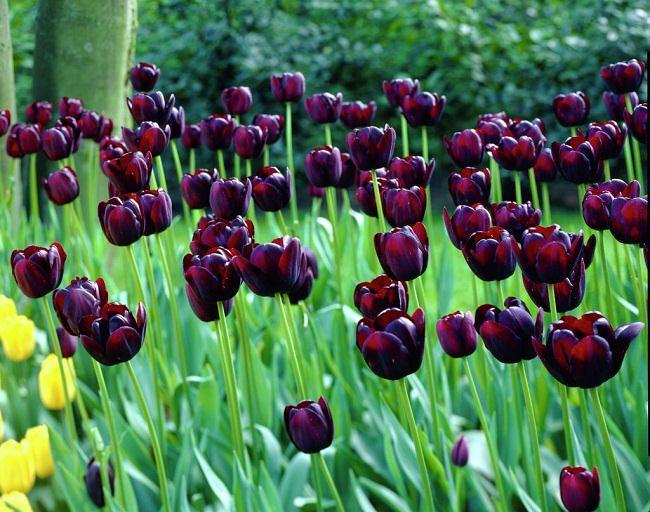
Beautiful and dramatic, this tremendous closest to black flower appears in deep maroon color in spring. This variety can be mixed with white or pink tulips or other bright colored flower to create an astonishing view.
Good thing is that it is a low maintenance plant and usually easy to grow, that makes it a good plant for beginners. This fairly cold hardy plant blooms in mid or late spring under USDA Zones 3 to 8.
2. Petunia, Sophistica Blackberry Hybrid
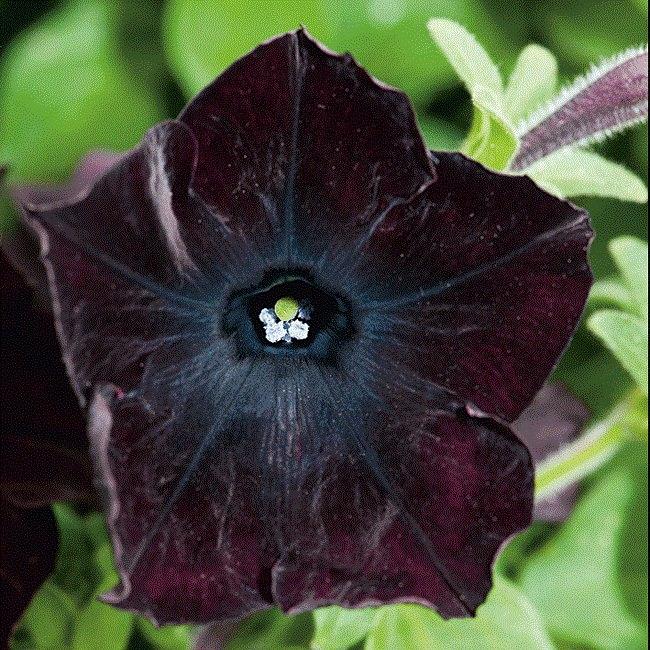
Newly engendered varieties like ‘Black Velvet Petunia’ or ‘Black Cat Petunia’ look almost black but it may be hard and expensive to find their seeds. However, beautiful petunia, ‘Sophistica blackberry’ is an easier option. The dark flowers of this annual are actually deep reddish or burgundy in color and can be grown in window boxes, pots, beds and borders.
3. Helleborus ‘Onyx Odyssey’

The dark burgundy or nearly black hellebores are highly appreciated for their color. This lovely perennial can easily be grown in containers in part to full sun. Provide good air circulation around the plant and keep the soil well moist. Grows best in USDA zones 5-9 hellebores are early bloomers and flower in spring.
4. Viola ‘Molly Sanderson’

Violas ‘Molly Sanderson’ are another excellent option to enjoy flowers in black color, can be grown in both on the ground or in containers, flowers appear from spring to fall. They are very good around pale yellow primroses or multicolor pansies.
5. Iris ‘Before the Storm’

Irises are widely used in gardens and are available in almost every color imaginable, including chocolate and this new variety ‘Before the Storm’ of black color. This slightly fragrant iris requires a sunny position and well-drained soil in order to grow.
6. Physocarpus Opulifolius ‘Diabolo’ syn. ‘Monlo’
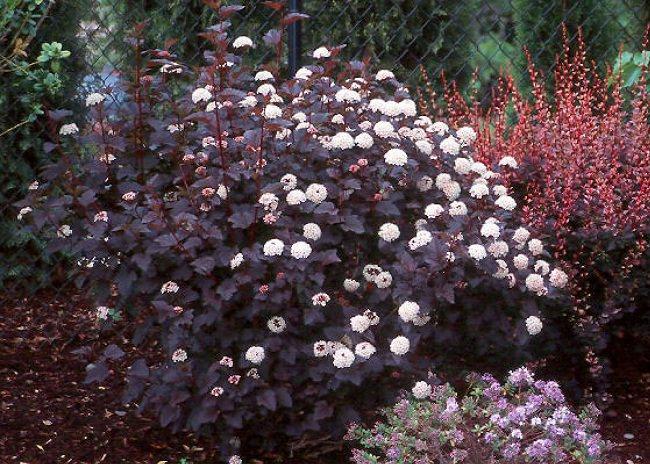
A versatile and appealing shrub with white flowers and deep burgundy foliage that looks black in shade or in dark. It is easy to grow and tolerates a wide range of soil conditions, it grows best in USDA Zones 2-7 and must be planted in an area of partial shade in warmer zones due to the reason that in higher heat the foliage can become green.
7. Black Baccara Rose

This dramatic tea rose due to its bold color and upright habit looks stunning, it is one of the best black flowers. Its almost black color and fragrant blooms make an amazing display in the garden. The leathery green foliage are reddish when young. The flowers appear blacker in cool weather.
8. Hollyhock ‘Nigra’
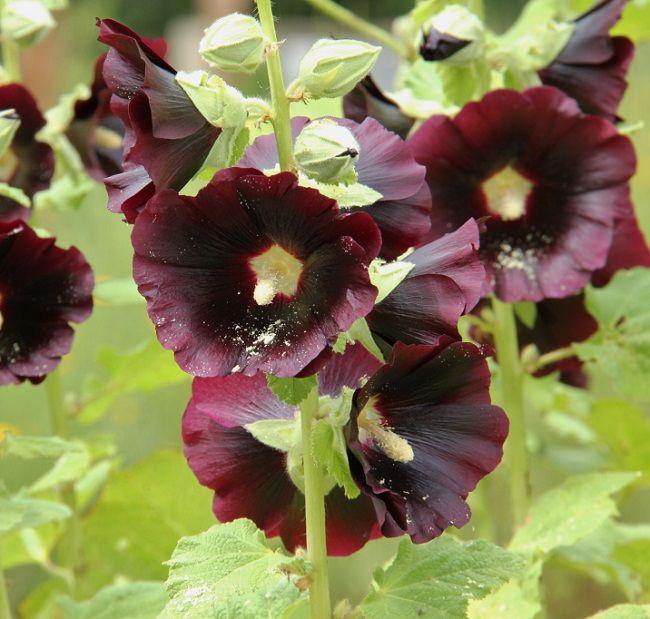
Hollyhocks are beautiful, they look exceptional when flowers appear on their tall strong stems. But, particularly, this unique variety hollyhock, Alcea rosea ‘Nigra’ bears breathtaking chocolate maroon flowers that look almost black towards the center. Hollyhocks are old traditional plants, easy to grow and grow in a variety of climates easily (both in cool and warm climates in USDA Zones 3-10a).
Hollyhocks are old traditional plants, easy to grow and grow in a variety of climates easily (both in cool and warm climates in USDA Zones 3-10a).
9. Wine and Roses (Weigela florida)

This variety of Weigela is sold as ‘Wine and Roses’ or ‘Alexandra’, it offers a surprising combination of flowers in pink tones immersed in a deep burgundy foliage, looks black like. Suitable for cold climates, it likes full sun but tolerates some light shade too, this small shrub can also be grown in containers; easy to grow and bloom profusely in spring or early summer and continue to bloom throughout the summer season.
10. Black Beauty ‘Elderberry’

Another excellent choice within our list of black flowers and plants is Sambucus nigra ‘Gerda’, valued for its purple-black foliage, pink flowers, and juicy edible fruits. Elderberry can be used to add foliage interest in the garden but it looks especially wonderful when its flowers appear in summer. These flowers cover the plant and emit a light lemon like fragrance, then, the dark purple berries appear.
11. Calla Lily ‘Black Star’

One of the most decorative flowers the ‘Black Star’ bloom is deep purple with a spathe that is almost black, it looks attractive in combination with light green foliage spotted with red tips. It can be planted in containers, in the garden border.
12. Black Mondo Grass

A wonderful alternative for warm climates in rock gardens, borders or in a pot. The ‘black mondo grass’ grows about 12 inches tall and can extend up to 6-12 inches wide. In spring, the new dark green foliage emerges and then in summer it changes into a very deep purple-black. Also by mid-summer tiny bell-shaped white flowers appear, followed by small black seeds.
13. Aeonium Arboreum

This subtropical subshrub is an impressive and dramatic plant. This tall succulent has rosettes of dark reddish brown or burgundy leaves and yellow flowers that appear from summer through fall. The plant is more suitable to warm climates and should be protected in winters in cold climates.
14. Canna- Black Tropicanna
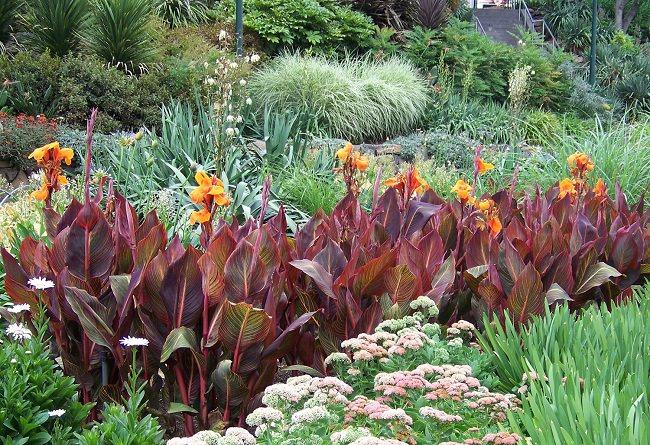
Bring a tropical touch with this plant to your garden. With its bright flowers and dark bronze to chocolate color large foliage, it can bring a great impact to your garden. More suitable for warmer zones, it must be planted in an area that receives at least six hours of daily sun.
15. Dahlia ‘Arabian Night’
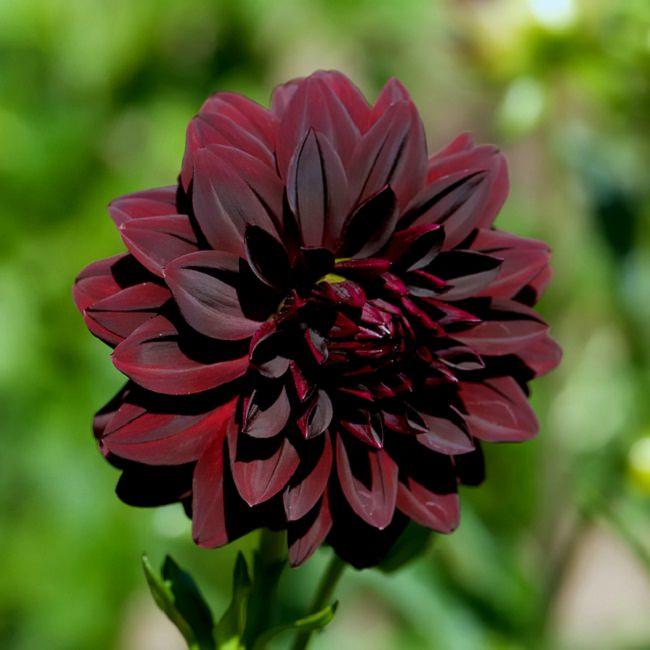
Dahlias become most beautiful cut flowers. This cultivar dahlia ‘Arabian night’ has deep purple-red flowers. The flowers look black like in shade. Growing dahlia requires full sun, however, shade in the afternoon in warm climates is preferable.
16. Colocasia ‘Black Magic’
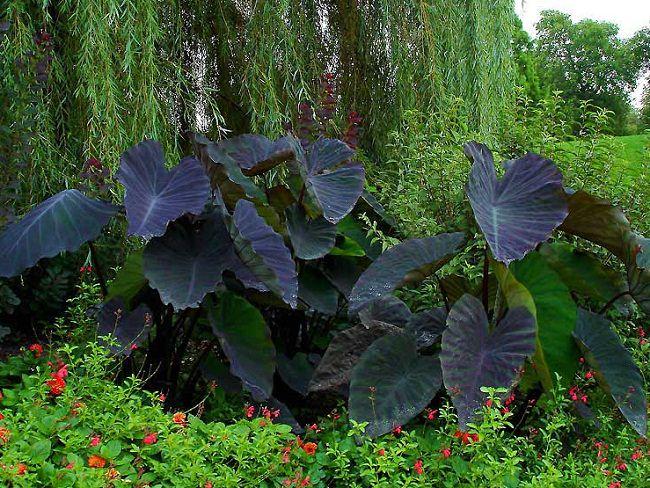
Colocasia ‘black magic’ is an astonishing plant that can be identified from its dramatic large and dark purple-black dusty leaves. This ‘Elephant Ear’ requires warmth and heat to thrive as it is a tropical plant and grows best in warm temperates and subtropical to tropical climates (USDA Zones 8-11). But even living in colder areas, you can enjoy this as an annual. It is a great idea to use it as a focal point by surrounding bright and colorful plants around it.
17. Coleus ‘Black Prince’

The coleus is one of the most widespread species and most popular when it comes to choosing striking foliage plants for the garden. The coleus ‘Black Prince’ can be grown for its unusual solid black foliage and small flowers, either as a perennial in warm subtropical or tropical regions or as an annual in temperates. It is a perfect plant for borders and can be used in combinations with other plants in containers.
Also Read: Heat Tolerant Flowers
18. Silver-Laced Primrose (Primula ‘Victoriana Lace Silver Black’)

Beautiful! This gorgeous flower is one of the rarest and difficult to obtain Primulas. It produces flowers of black-brown color with a scalloped silver edges and a golden center. Blooms are fragrant and appear in spring. This plant can be grown in cool and warm temperate regions (USDA Zones 5-9), it prefers partial shade and moist soil.
19. Heuchera ‘Obsidian’

Also called ‘Obsidian Coral Bells’ it is one of the most beautiful black color plants in our list that you can grow in borders, in flower beds or in containers to add an all season foliage interest to your garden. Its tiny flowers are also attractive, this plant requires cool weather and partial shade to thrive.
20. Bat Flower

Tacca bat flower (Tacca chantieri) is really a unique, rare and exotic flower that mimics a bat in flight. The plant requires warm subtropical or tropical weather in order to grow outside, in a cold climate you can grow it outside.
First thing first, black plants are not really black, but dark purple, deep burgundy, maroon or red. These type of flowers and plants of black color can transform any garden or container garden in an exquisite way, they add a tropical touch and look exceptional when grown with other bright colored plants.
1. Tulip ‘Queen of Night’

Beautiful and dramatic, this tremendous closest to black flower appears in deep maroon color in spring. This variety can be mixed with white or pink tulips or other bright colored flower to create an astonishing view.
Good thing is that it is a low maintenance plant and usually easy to grow, that makes it a good plant for beginners. This fairly cold hardy plant blooms in mid or late spring under USDA Zones 3 to 8.
2. Petunia, Sophistica Blackberry Hybrid

Newly engendered varieties like ‘Black Velvet Petunia’ or ‘Black Cat Petunia’ look almost black but it may be hard and expensive to find their seeds. However, beautiful petunia, ‘Sophistica blackberry’ is an easier option. The dark flowers of this annual are actually deep reddish or burgundy in color and can be grown in window boxes, pots, beds and borders.
3. Helleborus ‘Onyx Odyssey’

The dark burgundy or nearly black hellebores are highly appreciated for their color. This lovely perennial can easily be grown in containers in part to full sun. Provide good air circulation around the plant and keep the soil well moist. Grows best in USDA zones 5-9 hellebores are early bloomers and flower in spring.
4. Viola ‘Molly Sanderson’

Violas ‘Molly Sanderson’ are another excellent option to enjoy flowers in black color, can be grown in both on the ground or in containers, flowers appear from spring to fall. They are very good around pale yellow primroses or multicolor pansies.
5. Iris ‘Before the Storm’

Irises are widely used in gardens and are available in almost every color imaginable, including chocolate and this new variety ‘Before the Storm’ of black color. This slightly fragrant iris requires a sunny position and well-drained soil in order to grow.
6. Physocarpus Opulifolius ‘Diabolo’ syn. ‘Monlo’

A versatile and appealing shrub with white flowers and deep burgundy foliage that looks black in shade or in dark. It is easy to grow and tolerates a wide range of soil conditions, it grows best in USDA Zones 2-7 and must be planted in an area of partial shade in warmer zones due to the reason that in higher heat the foliage can become green.
7. Black Baccara Rose

This dramatic tea rose due to its bold color and upright habit looks stunning, it is one of the best black flowers. Its almost black color and fragrant blooms make an amazing display in the garden. The leathery green foliage are reddish when young. The flowers appear blacker in cool weather.
8. Hollyhock ‘Nigra’

Hollyhocks are beautiful, they look exceptional when flowers appear on their tall strong stems. But, particularly, this unique variety hollyhock, Alcea rosea ‘Nigra’ bears breathtaking chocolate maroon flowers that look almost black towards the center. Hollyhocks are old traditional plants, easy to grow and grow in a variety of climates easily (both in cool and warm climates in USDA Zones 3-10a).
Hollyhocks are old traditional plants, easy to grow and grow in a variety of climates easily (both in cool and warm climates in USDA Zones 3-10a).
9. Wine and Roses (Weigela florida)

This variety of Weigela is sold as ‘Wine and Roses’ or ‘Alexandra’, it offers a surprising combination of flowers in pink tones immersed in a deep burgundy foliage, looks black like. Suitable for cold climates, it likes full sun but tolerates some light shade too, this small shrub can also be grown in containers; easy to grow and bloom profusely in spring or early summer and continue to bloom throughout the summer season.
10. Black Beauty ‘Elderberry’

Another excellent choice within our list of black flowers and plants is Sambucus nigra ‘Gerda’, valued for its purple-black foliage, pink flowers, and juicy edible fruits. Elderberry can be used to add foliage interest in the garden but it looks especially wonderful when its flowers appear in summer. These flowers cover the plant and emit a light lemon like fragrance, then, the dark purple berries appear.
11. Calla Lily ‘Black Star’

One of the most decorative flowers the ‘Black Star’ bloom is deep purple with a spathe that is almost black, it looks attractive in combination with light green foliage spotted with red tips. It can be planted in containers, in the garden border.
12. Black Mondo Grass

A wonderful alternative for warm climates in rock gardens, borders or in a pot. The ‘black mondo grass’ grows about 12 inches tall and can extend up to 6-12 inches wide. In spring, the new dark green foliage emerges and then in summer it changes into a very deep purple-black. Also by mid-summer tiny bell-shaped white flowers appear, followed by small black seeds.
13. Aeonium Arboreum

This subtropical subshrub is an impressive and dramatic plant. This tall succulent has rosettes of dark reddish brown or burgundy leaves and yellow flowers that appear from summer through fall. The plant is more suitable to warm climates and should be protected in winters in cold climates.
14. Canna- Black Tropicanna

Bring a tropical touch with this plant to your garden. With its bright flowers and dark bronze to chocolate color large foliage, it can bring a great impact to your garden. More suitable for warmer zones, it must be planted in an area that receives at least six hours of daily sun.
15. Dahlia ‘Arabian Night’

Dahlias become most beautiful cut flowers. This cultivar dahlia ‘Arabian night’ has deep purple-red flowers. The flowers look black like in shade. Growing dahlia requires full sun, however, shade in the afternoon in warm climates is preferable.
16. Colocasia ‘Black Magic’

Colocasia ‘black magic’ is an astonishing plant that can be identified from its dramatic large and dark purple-black dusty leaves. This ‘Elephant Ear’ requires warmth and heat to thrive as it is a tropical plant and grows best in warm temperates and subtropical to tropical climates (USDA Zones 8-11). But even living in colder areas, you can enjoy this as an annual. It is a great idea to use it as a focal point by surrounding bright and colorful plants around it.
17. Coleus ‘Black Prince’

The coleus is one of the most widespread species and most popular when it comes to choosing striking foliage plants for the garden. The coleus ‘Black Prince’ can be grown for its unusual solid black foliage and small flowers, either as a perennial in warm subtropical or tropical regions or as an annual in temperates. It is a perfect plant for borders and can be used in combinations with other plants in containers.
Also Read: Heat Tolerant Flowers
18. Silver-Laced Primrose (Primula ‘Victoriana Lace Silver Black’)

Beautiful! This gorgeous flower is one of the rarest and difficult to obtain Primulas. It produces flowers of black-brown color with a scalloped silver edges and a golden center. Blooms are fragrant and appear in spring. This plant can be grown in cool and warm temperate regions (USDA Zones 5-9), it prefers partial shade and moist soil.
19. Heuchera ‘Obsidian’

Also called ‘Obsidian Coral Bells’ it is one of the most beautiful black color plants in our list that you can grow in borders, in flower beds or in containers to add an all season foliage interest to your garden. Its tiny flowers are also attractive, this plant requires cool weather and partial shade to thrive.
20. Bat Flower

Tacca bat flower (Tacca chantieri) is really a unique, rare and exotic flower that mimics a bat in flight. The plant requires warm subtropical or tropical weather in order to grow outside, in a cold climate you can grow it outside.
1
1
文章
Alicia
2017年05月22日

Iris are one of the most beautiful and low care flowers that is why they are gardener’s favorite and if you are growing them, learn about the iris companion plants.
There are hundreds of Iris species with different growing needs and if you want to plant iris and its companion plants, first you’ll need to know about the requirements of specific iris species you are growing.
Companion Plants for Iris
While choosing iris companion plants, experiment. Instead of focusing only on the plant’s health, consider about the plants that require similar growing conditions and complement the color and texture of irises you are growing.
Bearded Iris Companion Plants
Companion plants for tall, dwarf and other bearded iris are Columbine, sweet rocket, pyrethrum, blue salvia, coralbells and Narcissus. Lilies, hemerocallis hybrids, penstemons, phlox and chrysanthemums are also used in combination with irises. Some gardeners grow forsythia in poor soil with iris.
Japanese Iris Companion Plants
Japanese iris grows in moist soil, their soil requirement is similar to impatiens. You can grow them in moist to boggy soil. Grow moisture loving plants with Japanese iris like soft rush, tropical sage and impatiens if there is shade, you can also ferns and plants like hosta near it.
Siberian Iris Companion Plants
Siberian irises are cold hardy and low maintenance. They grow in full sun to part shade and thrive in wide range of soil, preferably moist. Grow siberian iris plants in clumps to create a beautiful color contrast with daylilies, marsh spurge, ornamental poppy, lady’s mantle and cranesbill.
Other Iris Companion Plants
Peonies are traditionally companions for irises. If you plant a garden with irises, peonies and roses it will look wonderful. One more plant is forsythia, forsythia not only helps the irises grow, but also provides the beautiful contrast of color. Forsythia flowers herald the arrival of spring and their yellow colored blooms are perfect match for reticulated iris that flowers in the spring as well.
There are hundreds of Iris species with different growing needs and if you want to plant iris and its companion plants, first you’ll need to know about the requirements of specific iris species you are growing.

Companion Plants for Iris
While choosing iris companion plants, experiment. Instead of focusing only on the plant’s health, consider about the plants that require similar growing conditions and complement the color and texture of irises you are growing.
Bearded Iris Companion Plants
Companion plants for tall, dwarf and other bearded iris are Columbine, sweet rocket, pyrethrum, blue salvia, coralbells and Narcissus. Lilies, hemerocallis hybrids, penstemons, phlox and chrysanthemums are also used in combination with irises. Some gardeners grow forsythia in poor soil with iris.
Japanese Iris Companion Plants
Japanese iris grows in moist soil, their soil requirement is similar to impatiens. You can grow them in moist to boggy soil. Grow moisture loving plants with Japanese iris like soft rush, tropical sage and impatiens if there is shade, you can also ferns and plants like hosta near it.
Siberian Iris Companion Plants
Siberian irises are cold hardy and low maintenance. They grow in full sun to part shade and thrive in wide range of soil, preferably moist. Grow siberian iris plants in clumps to create a beautiful color contrast with daylilies, marsh spurge, ornamental poppy, lady’s mantle and cranesbill.
Other Iris Companion Plants
Peonies are traditionally companions for irises. If you plant a garden with irises, peonies and roses it will look wonderful. One more plant is forsythia, forsythia not only helps the irises grow, but also provides the beautiful contrast of color. Forsythia flowers herald the arrival of spring and their yellow colored blooms are perfect match for reticulated iris that flowers in the spring as well.
0
1
文章
Andrea
2017年05月22日


I’ve always loved having edibles in my garden. It isn’t a new idea, cottage gardens in Europe traditionally combined growing vegetables for the family along with table flowers, due to the small spaces most people had in those times. And cottage gardening continues to be one of the most popular gardening styles, because of the charm and possibilities that those type of gardens hold. I suppose there is something satisfying about an ornamental edible garden that touches on our needs for survival, but acknowledges our need for beauty. And so it perseveres, but edible gardens for beauty lost their appeal in the new century. Fortunately, with the new awareness of “green” living, and the DIY movement in design, gardeners are looking at their spaces in new ways. We don’t plant any longer within a structure of “rules”. We plant, and design, for that matter, leaning towards trying things that are new, pushing the envelope a bit, and being unique.
Ornamental edible gardens are becoming hot… with small spaces common and the desire to grow at least some of our own food, we need to see this more!
Some easy guidelines for growing ornamental edibles?
Remember to balance edibles that have a short growing season with edibles that are evergreen, or at least last all season. You don’t want a big hole in your garden when the lettuce is down for the summer.
Edibles can include herbs, veggies, fruits and some flowers too!
Remember texture is very important in an edible garden.
Don’t forget that the color of fruit or veggies affect the design as well. Hot peppers look great in glossy green, but add a pop of red when they mature!
Remember the basics… shade plants in shade gardens, sun in sun gardens. That having been said, most edible gardens will do better with 6 hours or more of sun a day. Some edibles, such as lettuce and some herbs, prefer afternoon shade. Plan accordingly.
Watch for pests, and treat as necessary. However, integrating herbs into your edible design can actually help minimize some pest problems.
Some ideas for ornamental edible plants?
Red and green leaf lettuce.
Cabbages
Other greens, such as red swiss chard and celery.
Herbs
Artichokes
Edible flowers such as roses, day lilies, pansies, nasturtiums and honeysuckle
Fruit trees and bushes. Blueberry blushes are especially handsome plants.
Still not convinced an ornamental edible garden can be beautiful?

Cabbage and tulips!

A pretty lettuce border.

Herbs used in a formal design.

Cabbage in a boxwood border.

Herbs in a beautiful combination border by Rosalind Creasy.
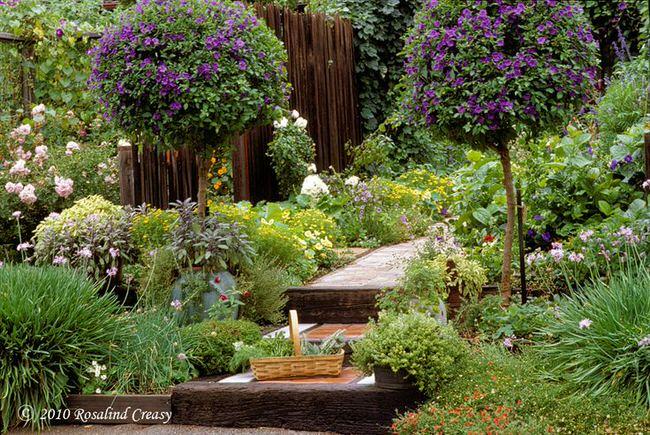
0
0
文章
Juze
2017年05月22日

Guava tree care and growing is easy. With the information given in this article, you can understand how to grow guava tree in a pot. It will delight you with its sweetly scented flowers, delicious fruits, and beautiful tropical appearance.
USDA Hardiness Zones— 9 – 11, *can be grown in colder zones in pot
Difficulty— Easy
Other Names— Psidium guajava, Amrood, Amrut Phala, Araçá-Goiaba, Araçá-Guaçú, Banjiro, Brazilian Guava, Brazilian Red Guava, Common Guava, Fan Shi Liu, Feuille de Goyavier, Goiaba, Goiabeiro, Goyabe, Goyave, Goyave Jaune, Goyave Rouge, Goyavier, Goyavier du Brésil, Guaiaba, Guaiava, Guajava, Guava Leaf, Guava Leaves, Guava Peel, Guava Pulp, Guava Seed, Guava Seed Protein, Guavas, Guave, Guavenbaum, Guayaba, Guayabo, Guayave, Koejawel, Lemon Guava, Pépin de Goyave, Psidium, Psidium guajava, Pulpe de Goyave, Red Guava, Yellow Guava, Bihi

Guava Tree Information
Guava tree is a small tropical tree that grows 5-6 meters high on average, but if properly pruning it does not exceed the height of 3 m. It is a tough plant that can also be grown in containers.
Guava tree stems are tender when they are angled. The leaves are born in pairs, pale green, leathery and elongated, ending in the sharp tip with a length ranging between 10 and 20 cm and 8 cm wide. The flowers are borne at the base of the leaves, about 1-3 per node, in the younger branches with a great number of stamens and one pistil. Fruit shape, size, the color of flesh and skin usually depends on the variety. Maturity is observed when the shell reaches a yellowish-green, yellow, pink or pale color.
Also read: How to make Guava Bonsai
Best Guava Varieties
Over 100 varieties of guavas are identified in the world, different from each other by their flavor and appearance. Most of them can be grown in containers but we are listing some of the best.
Guava Ruby SupremeLucknow 49Psidium Guajava Nana (Dwarf Guava)Tikal GuavaRed Malaysian (Also grown for ornamental purposes)PatriciaIndonesian SeedlessIndonesian WhiteSafedaGuava Tree PropagationGrowing Guava from Cuttings
Guava is propagated from cuttings and seeds. Growing guava from cuttings require specific temperature and humidity, this method is suitable in warm climates.
Growing Guava from Seeds
Guava seeds are propagated easily with high germination rate. The main thing is that they must be fresh and obtained from the quality source. You can also use seed fresh seeds collected from the fruit but it is better to buy seeds from a seed store or online.
If you are using seeds obtained from guava fruit. Firstly, rinse them in soft water, which is not very cold then wrap the seeds in a cloth and dry them for a couple of hours. Then pour them in a cup of warm water and soak the seeds for 3-4 hours. Prepare a pot filled with seed starting mix, and sprinkle seeds in it. Now put the pot on a warm, well-lit spot, like a windowsill. To speed up germination, you can install a small plastic or cellophane over the top of a pot.
Guava tree grown from seeds take 3-4 years to mature and start to form fruits. From cuttings, it grows more quickly. However, our recommendation for you is to buy a grafted guava tree. Most of the grafted trees start to bear fruit in the same year and remain healthy.Planting Guava Tree
Choosing a pot
Guava tree grows large (around 30 feet) but in pots, it can be reduced to 2-3 m. Choose a pot that is at least 3 gallon (10 inches) to provide the plant a sufficient space to grow roots. *It is best to choose a clay pot with sufficient drainage holes in the bottom.
Also Read: How to Grow Pineapple Guava
Requirements for Growing Guava Tree in a PotLocation
Guava loves the sunny and warm exposure. It is a tropical plant but very much adaptable to temperate climates with moderate winter, when grown on the ground.
If you are growing guava in a container in tropics you can choose a location that receives shade in the afternoon and at least six hours of sun daily. In colder zones, place the plant in a spot that receives full sun for healthy growth and more fruiting.
Soil
For growing guava in pots choose a quality potting mix or make your own substrate using equal parts compost, sand, and soil.
Growing guava is possible in a variety of soil types. It is one of the plants that tolerates different soil types easily. It can be grown in heavy clay-rich or very sandy soil with pH ranging from 4.5 (acidic) to 9.4 (alkaline), but a loose, well-drained soil that is rich in organic matter and neutral to slightly acidic in pH is optimum.
When growing guava in a pot choose a self-pollinating variety.
Temperature range
The optimum temperature for germination of guavas falls in the range of 68 to 82 F (20 to 28 C). In winters, the temperature must not fall below 27 F (-3 C) for young guava trees. Mature guava tree (at least 3 years old) can bear temperature down to 20 F (-6 C). Remember, guavas are not frost tolerant, especially young plants, so if in a climate where the temperature falls below the range given here then it is better to keep the plant indoors until the temperature rises up.
Watering
When the plant is young or forming flowers water it regularly and deeply to keep the soil slightly moist. Evenly moist soil at the time of fruiting helps in developing more juicy and sweet fruits. In winter reduce the watering. One of the most interesting facts about guava trees is that they are drought tolerant and once established they can survive only on rainfall and bear long periods of drought. Still, it better to keep the soil slightly moist.
Guava Tree CareGuava tree care is simple and easy and with a few basic information, you can grow a healthy plant.Pruning
Pruning guava is essential to keep guava tree growing in a pot in desired shape and size to develop a strong structure, healthy plant and increased fruiting.
Dry, dead, damaged or diseased branches can be pruned anytime. The crowns grow naturally and well-branched and do not need regular cutting. Best is to cut back too long, unbranched shoots and branches that are crossing each other and blocking the penetration of sun rays after the harvest or at the beginning of growing season.
Fruit Thinning
Whenever the first time your guava tree blooms to form fruits it is better to deadhead the flowers, never allowing the fruits to set (do this if your plant is weak).
Allow no more than 4 fruits per branch. Also, thin out the fruits if they are developing on a small and weak branch.
Repotting
Repot the plant in one size bigger than the previous one. Never plant a plant in a too big pot directly, albeit change the pot time to time once the plant has outgrown the current one.
Fertilizer
Guava responds well to the monthly fertilizing. When the tree is young and is not bearing fruits, fertilize your potted guava tree with 6:6:6:2 [N P K Mg] to speed up the growth of the plant.
When the tree starts to bear fruits change the composition to 8:3:9:2 [N P K Mg].
Guava tree is also susceptible to iron deficiency (symptoms includes yellowing of the leaves in between the dark green veins). It can be corrected or prevented by periodic application chelated iron.
Mulching
Do mulching with organic matter so that the plant retains moisture. Mulching also helps in insulating the root of guava tree in winter.
Pests and Diseases
Guava tree care from pests and diseases is not much required when grown in a pot. This fruit tree is very tough but you should keep an eye on common garden pests. Mealy bugs, guava scale, white flies, fruit flies and thrips can affect it.
In diseases, guava plant suffers from rust, which occurs in too warm weather and high humidity.Besides this, anthracnose and leaf spot can be a problem too, both of these occurs in wet humid weather and spread through splashed water. By proper irrigation, you can easily prevent this.
Harvesting Guavas
Most of the guava tree varieties are self-pollinating and fruit ripens year round in tropics (except summer). Guava fruits usually mature in 3 to 4 months after flowering.
In India, generally, the main crop arrives in winter and after the summer in the rainy season. Winter crop is more flavorsome and sweet.
Uses
Guava fruits taste better when picked earlier than they fully mature. Fruits are highly nutritious, rich in vitamin C and can be eaten raw, its seeds are edible too. Ripened fruits can be used to make guava ice-cream, juice, jam, chutney, sauce or desserts.
A Few Guava Tree Care TipsDo not abruptly change the location of your potted guava tree otherwise the plant may lose leaves (partially).To get a bushy plant, it is necessary to pinch the growing tip regularly.It is advisable to suspend the fertilizer during the winters. In tropics, you can continue it.
USDA Hardiness Zones— 9 – 11, *can be grown in colder zones in pot
Difficulty— Easy
Other Names— Psidium guajava, Amrood, Amrut Phala, Araçá-Goiaba, Araçá-Guaçú, Banjiro, Brazilian Guava, Brazilian Red Guava, Common Guava, Fan Shi Liu, Feuille de Goyavier, Goiaba, Goiabeiro, Goyabe, Goyave, Goyave Jaune, Goyave Rouge, Goyavier, Goyavier du Brésil, Guaiaba, Guaiava, Guajava, Guava Leaf, Guava Leaves, Guava Peel, Guava Pulp, Guava Seed, Guava Seed Protein, Guavas, Guave, Guavenbaum, Guayaba, Guayabo, Guayave, Koejawel, Lemon Guava, Pépin de Goyave, Psidium, Psidium guajava, Pulpe de Goyave, Red Guava, Yellow Guava, Bihi

Guava Tree Information
Guava tree is a small tropical tree that grows 5-6 meters high on average, but if properly pruning it does not exceed the height of 3 m. It is a tough plant that can also be grown in containers.
Guava tree stems are tender when they are angled. The leaves are born in pairs, pale green, leathery and elongated, ending in the sharp tip with a length ranging between 10 and 20 cm and 8 cm wide. The flowers are borne at the base of the leaves, about 1-3 per node, in the younger branches with a great number of stamens and one pistil. Fruit shape, size, the color of flesh and skin usually depends on the variety. Maturity is observed when the shell reaches a yellowish-green, yellow, pink or pale color.
Also read: How to make Guava Bonsai
Best Guava Varieties
Over 100 varieties of guavas are identified in the world, different from each other by their flavor and appearance. Most of them can be grown in containers but we are listing some of the best.
Guava Ruby SupremeLucknow 49Psidium Guajava Nana (Dwarf Guava)Tikal GuavaRed Malaysian (Also grown for ornamental purposes)PatriciaIndonesian SeedlessIndonesian WhiteSafedaGuava Tree PropagationGrowing Guava from Cuttings
Guava is propagated from cuttings and seeds. Growing guava from cuttings require specific temperature and humidity, this method is suitable in warm climates.
Growing Guava from Seeds
Guava seeds are propagated easily with high germination rate. The main thing is that they must be fresh and obtained from the quality source. You can also use seed fresh seeds collected from the fruit but it is better to buy seeds from a seed store or online.
If you are using seeds obtained from guava fruit. Firstly, rinse them in soft water, which is not very cold then wrap the seeds in a cloth and dry them for a couple of hours. Then pour them in a cup of warm water and soak the seeds for 3-4 hours. Prepare a pot filled with seed starting mix, and sprinkle seeds in it. Now put the pot on a warm, well-lit spot, like a windowsill. To speed up germination, you can install a small plastic or cellophane over the top of a pot.
Guava tree grown from seeds take 3-4 years to mature and start to form fruits. From cuttings, it grows more quickly. However, our recommendation for you is to buy a grafted guava tree. Most of the grafted trees start to bear fruit in the same year and remain healthy.Planting Guava Tree

Choosing a pot
Guava tree grows large (around 30 feet) but in pots, it can be reduced to 2-3 m. Choose a pot that is at least 3 gallon (10 inches) to provide the plant a sufficient space to grow roots. *It is best to choose a clay pot with sufficient drainage holes in the bottom.
Also Read: How to Grow Pineapple Guava
Requirements for Growing Guava Tree in a PotLocation
Guava loves the sunny and warm exposure. It is a tropical plant but very much adaptable to temperate climates with moderate winter, when grown on the ground.
If you are growing guava in a container in tropics you can choose a location that receives shade in the afternoon and at least six hours of sun daily. In colder zones, place the plant in a spot that receives full sun for healthy growth and more fruiting.
Soil
For growing guava in pots choose a quality potting mix or make your own substrate using equal parts compost, sand, and soil.
Growing guava is possible in a variety of soil types. It is one of the plants that tolerates different soil types easily. It can be grown in heavy clay-rich or very sandy soil with pH ranging from 4.5 (acidic) to 9.4 (alkaline), but a loose, well-drained soil that is rich in organic matter and neutral to slightly acidic in pH is optimum.
When growing guava in a pot choose a self-pollinating variety.
Temperature range
The optimum temperature for germination of guavas falls in the range of 68 to 82 F (20 to 28 C). In winters, the temperature must not fall below 27 F (-3 C) for young guava trees. Mature guava tree (at least 3 years old) can bear temperature down to 20 F (-6 C). Remember, guavas are not frost tolerant, especially young plants, so if in a climate where the temperature falls below the range given here then it is better to keep the plant indoors until the temperature rises up.
Watering
When the plant is young or forming flowers water it regularly and deeply to keep the soil slightly moist. Evenly moist soil at the time of fruiting helps in developing more juicy and sweet fruits. In winter reduce the watering. One of the most interesting facts about guava trees is that they are drought tolerant and once established they can survive only on rainfall and bear long periods of drought. Still, it better to keep the soil slightly moist.
Guava Tree CareGuava tree care is simple and easy and with a few basic information, you can grow a healthy plant.Pruning
Pruning guava is essential to keep guava tree growing in a pot in desired shape and size to develop a strong structure, healthy plant and increased fruiting.
Dry, dead, damaged or diseased branches can be pruned anytime. The crowns grow naturally and well-branched and do not need regular cutting. Best is to cut back too long, unbranched shoots and branches that are crossing each other and blocking the penetration of sun rays after the harvest or at the beginning of growing season.
Fruit Thinning
Whenever the first time your guava tree blooms to form fruits it is better to deadhead the flowers, never allowing the fruits to set (do this if your plant is weak).
Allow no more than 4 fruits per branch. Also, thin out the fruits if they are developing on a small and weak branch.
Repotting
Repot the plant in one size bigger than the previous one. Never plant a plant in a too big pot directly, albeit change the pot time to time once the plant has outgrown the current one.
Fertilizer
Guava responds well to the monthly fertilizing. When the tree is young and is not bearing fruits, fertilize your potted guava tree with 6:6:6:2 [N P K Mg] to speed up the growth of the plant.
When the tree starts to bear fruits change the composition to 8:3:9:2 [N P K Mg].
Guava tree is also susceptible to iron deficiency (symptoms includes yellowing of the leaves in between the dark green veins). It can be corrected or prevented by periodic application chelated iron.
Mulching
Do mulching with organic matter so that the plant retains moisture. Mulching also helps in insulating the root of guava tree in winter.
Pests and Diseases
Guava tree care from pests and diseases is not much required when grown in a pot. This fruit tree is very tough but you should keep an eye on common garden pests. Mealy bugs, guava scale, white flies, fruit flies and thrips can affect it.
In diseases, guava plant suffers from rust, which occurs in too warm weather and high humidity.Besides this, anthracnose and leaf spot can be a problem too, both of these occurs in wet humid weather and spread through splashed water. By proper irrigation, you can easily prevent this.
Harvesting Guavas
Most of the guava tree varieties are self-pollinating and fruit ripens year round in tropics (except summer). Guava fruits usually mature in 3 to 4 months after flowering.
In India, generally, the main crop arrives in winter and after the summer in the rainy season. Winter crop is more flavorsome and sweet.
Uses
Guava fruits taste better when picked earlier than they fully mature. Fruits are highly nutritious, rich in vitamin C and can be eaten raw, its seeds are edible too. Ripened fruits can be used to make guava ice-cream, juice, jam, chutney, sauce or desserts.
A Few Guava Tree Care TipsDo not abruptly change the location of your potted guava tree otherwise the plant may lose leaves (partially).To get a bushy plant, it is necessary to pinch the growing tip regularly.It is advisable to suspend the fertilizer during the winters. In tropics, you can continue it.
0
0
文章
Abigal
2017年05月22日

Learn how to grow star anise in this article. Star anise is a spice widely used in South East Asian cuisines, growing star anise is easy in subtropical climates. It is adorned with beautiful flowers and fruits that are star shaped.
USDA Zones— 8 – 11
Difficulty— Moderate
Other Names— Anis de Chine, Anís Estrellado, Anis Étoilé, Anis Étoilé Chinois, Aniseed Stars, Anisi Stellati Fructus, Ba Jiao Hui, Badiana, Badiane, Badiane de Chine, Bajiao, Chinese Anise, Chinese Star Anise, Eight-Horned Anise, Eight Horns and Illicium verum.
It belongs to the family of Illiciaceae, dicotyledonous angiosperm species. It is a tropical evergreen tree, tall between 5-10 m. Star anise has large glossy green foliage, its white flowers are beautiful and of great decorative value. Star anise fruit has eight carpels that together form the star-shaped fruit (hence called “Star anise”).
Propagation
Star anise is propagated by seeds or cuttings. How to grow star anise from seed: Seeds are propagated best when temperature range around 65 – 70 F (18 – 20 C). You can sow seeds in pots and or directly outside.
Water the seeds frequently to keep the soil moist and make sure the pot has drainage holes in the bottom to drain excess water.
Growing Condition
Star anise is native to Vietnam and China and grows in warm subtropical climate. It is a frost tender perennial. Star anise only grows in areas where the temperature does not fall below 15 F (-10 C) . If you live in a cooler area below USDA Zone 9, plant star anise in a container so that you can keep it in a greenhouse or indoors in winter.
Requirements for Growing Star AnisePosition
Star anise requires dappled shade, partial sun but if you’re growing star anise in a much cooler climate, plant it in a warm and sunny location. Choose location in a way that it is not exposed to cold and dry winds.
Soil
Provide soil that is humus and compost rich. Soil texture should be loamy and well drained. Slightly acidic to neutral soil is optimal.
Watering
For growing star anise, do regular watering and keep the soil slightly moist but reduce the watering in winter.
Star Anise CareFertilizer
Spread a 3-inch layer of compost or aged manure on the ground surrounding the tree in the spring. This is the only fertilizer it requires.
If soil is poor, apply slow release fertilizer all purpose fertilizer in the spring.
Pruning
When the plant is young pinch and prune it if you want to make it bushier. There are no special pruning requirements, however, you can always prune off dead, diseased and weak branches.
Harvest
Star anise tree takes at least 6 years to fruit if grown from seeds. These fruits (wrongly called seeds) are picked unripe while they are still green, later on these fruits are sun dried until their color change to reddish-brown, seeds can be removed once the fruits are ready to be stored.
Pests and Diseases
There are not any specific pest or disease that bothers it. Star anise itself has anti bacterial and pest repellent properties.
Uses
Star Anise is widely used in Asian cuisines to flavor dishes especially meat and curries, it is also used in desserts and beverages. Together with fennel seeds, cloves, cinnamon and pepper it is considered as one of the “Five Chinese Spice”, used for its strong taste and spicy flavor. It is an essential part of Chinese cuisines and also used in variety of Indian recipes. It’s addition to other popular Indian spices makes a special spicy ingredient, which is called “Garam masala”.
Warnings
While growing star anise, don’t confuse it with Japanese star anise (Illicium anisatum) or “Shikimi“, which is a poisonous plant and native to Japan. Its seeds or fruits are somewhat similar to those of star anise and are only slightly smaller and looks like cardamom, having a more rounded shape and have a small hook.

USDA Zones— 8 – 11
Difficulty— Moderate
Other Names— Anis de Chine, Anís Estrellado, Anis Étoilé, Anis Étoilé Chinois, Aniseed Stars, Anisi Stellati Fructus, Ba Jiao Hui, Badiana, Badiane, Badiane de Chine, Bajiao, Chinese Anise, Chinese Star Anise, Eight-Horned Anise, Eight Horns and Illicium verum.
It belongs to the family of Illiciaceae, dicotyledonous angiosperm species. It is a tropical evergreen tree, tall between 5-10 m. Star anise has large glossy green foliage, its white flowers are beautiful and of great decorative value. Star anise fruit has eight carpels that together form the star-shaped fruit (hence called “Star anise”).
Propagation
Star anise is propagated by seeds or cuttings. How to grow star anise from seed: Seeds are propagated best when temperature range around 65 – 70 F (18 – 20 C). You can sow seeds in pots and or directly outside.
Water the seeds frequently to keep the soil moist and make sure the pot has drainage holes in the bottom to drain excess water.
Growing Condition
Star anise is native to Vietnam and China and grows in warm subtropical climate. It is a frost tender perennial. Star anise only grows in areas where the temperature does not fall below 15 F (-10 C) . If you live in a cooler area below USDA Zone 9, plant star anise in a container so that you can keep it in a greenhouse or indoors in winter.
Requirements for Growing Star AnisePosition
Star anise requires dappled shade, partial sun but if you’re growing star anise in a much cooler climate, plant it in a warm and sunny location. Choose location in a way that it is not exposed to cold and dry winds.
Soil
Provide soil that is humus and compost rich. Soil texture should be loamy and well drained. Slightly acidic to neutral soil is optimal.
Watering
For growing star anise, do regular watering and keep the soil slightly moist but reduce the watering in winter.
Star Anise CareFertilizer
Spread a 3-inch layer of compost or aged manure on the ground surrounding the tree in the spring. This is the only fertilizer it requires.
If soil is poor, apply slow release fertilizer all purpose fertilizer in the spring.
Pruning
When the plant is young pinch and prune it if you want to make it bushier. There are no special pruning requirements, however, you can always prune off dead, diseased and weak branches.
Harvest
Star anise tree takes at least 6 years to fruit if grown from seeds. These fruits (wrongly called seeds) are picked unripe while they are still green, later on these fruits are sun dried until their color change to reddish-brown, seeds can be removed once the fruits are ready to be stored.
Pests and Diseases
There are not any specific pest or disease that bothers it. Star anise itself has anti bacterial and pest repellent properties.
Uses
Star Anise is widely used in Asian cuisines to flavor dishes especially meat and curries, it is also used in desserts and beverages. Together with fennel seeds, cloves, cinnamon and pepper it is considered as one of the “Five Chinese Spice”, used for its strong taste and spicy flavor. It is an essential part of Chinese cuisines and also used in variety of Indian recipes. It’s addition to other popular Indian spices makes a special spicy ingredient, which is called “Garam masala”.
Warnings
While growing star anise, don’t confuse it with Japanese star anise (Illicium anisatum) or “Shikimi“, which is a poisonous plant and native to Japan. Its seeds or fruits are somewhat similar to those of star anise and are only slightly smaller and looks like cardamom, having a more rounded shape and have a small hook.
2
0
文章
Abigal
2017年05月22日

These 13 great edible flowers not only look great but also taste good and rich in nutrients. Start using them to add color and flavor to your food and improve your health.
1. Violet (Pansy)
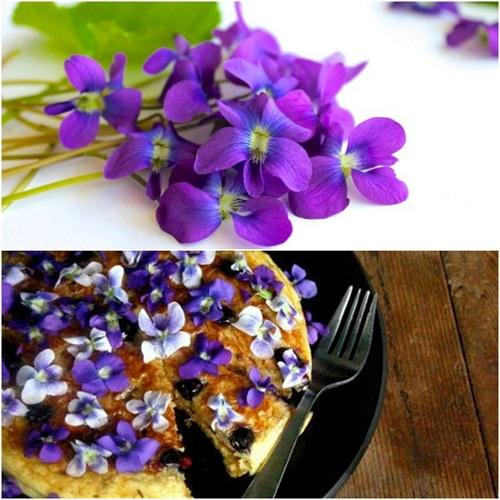
Violets are as satisfying to the eye as they are to the palate, which is the reason they are on our list of great edible flowers. You may have even observed them blended into cocktails and cold drinks. You can also dress up your salad or use it in stuffings or to flavor the desserts.
Learn about the interesting pansy flower recipes here!
They can help with a cough or a headache and are even known to calm pain, especially the esophageal assortment. Violet flowers also purify the blood. Click here to learn more!
2. Chamomile

If you’ve ever sipped a cup of chamomile tea to relax or quiet a resentful stomach, you’re as of now mindful of exactly how relieving chamomile can be. Like dandelion, it’s an individual from the daisy family, and the flower has a flavor that may help you to remember apples. You can chomp on a couple of raw flowers or dry them and utilize them to brew a calming tea.
Learn about the plants you can grow for beauty therapies
Some of its medical advantages incorporate ADHD, relief from bloating, stomach infirmities and insomnia. In any case, the individuals who are allergic to ragweed are encouraged to dodge chamomile.
3. Rose

Among the majority of the edible flowers out there, the rose is a standout amongst the most well-known and it also has great culinary uses. You may also have tasted different foods flavored with rose, for example, rose tea, rose water, rose jelly, rose milk and even rose ice cream.
Take a look at this Indian Rose Milk recipe, it’s too delicious!
Not just culinary uses, roses can also help your body in various ways. Rose hips, which are the base of the flowers, can be utilized to oversee indigestion, arthritis, fevers, urinary issues and constipation. Rose petals are rich in various vitamins and minerals, including vitamins A, E, C, D, and B.
4. Clover flowers

If you consider clover as a weed, you should not! This useful flowering plant has many medicinal and edible uses. The sweet, anise-like taste makes it unique. Serve raw petals in a salad or utilize to make a tea. Brightest and healthiest flowers must be picked; it can taste intense once it begins turning chestnut.
Learn how to grow clover!
Local Americans utilize the flower for cough and cold, and it also helps in a condition like varicose veins known as venous inadequacy. This natural blood purifier is supportive with hot flashes and uterine fibroids. If you want to know more about the clover health benefits, click here.
5. Saffron

Saffron gives a great taste and color to dishes. Also, the saffron is rich in minerals, for example, potassium, calcium, copper, iron, zinc, magnesium, selenium and manganese. It has various vitamins, for example, folic acid, niacin, and vitamins A and C.
It has generally been utilized as an antioxidant, antidepressant, and antiseptic.
6. Tree Peony

Peonies, which is local to China, is more than only a delightful flower to look at. It really conveys with it a large group of healing properties. Peonies can be added into salads or you can boil the petals and make a tea.
It holds a large group of advantages, particularly for those with diabetes or high cholesterol, it also prevents blood clotting. This bloom has one of the highest convergences of phenolic mixes, which are anti-inflammatory and may lessen the risk of heart disease and certain cancers. Click here to learn more!
7. Japanese Honeysuckle
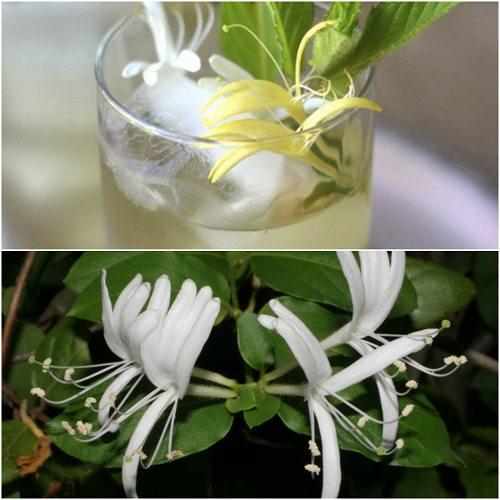
The Japanese honeysuckle grows wild in the U.S. or in many other parts of the world, it’s essential to remember that there are various species of honeysuckle with fluctuating levels of safety and advantages. The yellowish blossom petals of the honeysuckle have sweet nectar-like flavor. Remember that only the blossoms are eatable; the bloom’s dark berries are very noxious so continue with care.
Learn about the 5 recipes that use Honeysuckle flowers as an ingredient!
The blossom has been reported to help with issues, for example, flu, depression, blood impurities, tick bites, infections and even gout. Their cancer prevention properties are well-known too.
8. Marigold (Calendula)

Its (all marigold flowers are edible) merry orange color looks beautiful when it crowns a dish of rice or pasta, and its peppery taste is satisfying in soups and eggs. It can be used in place of saffron.
Calendula is known to heal skin and lessen inflammation, helping wounds, cuts, ulcers and eczema.
9. Nasturtium
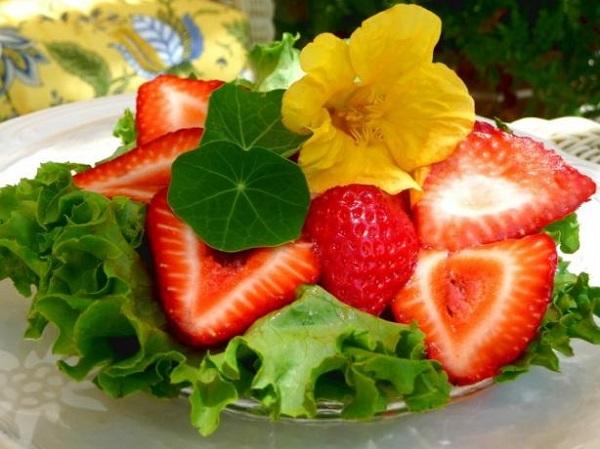
The beautiful, bright, and mildly fragrant nasturtium flowers not only makes your hanging basket charming, you can also pick them fresh to use in salads or garnish your recipes with them to add color. Their mild peppery, sweet, and mustard-like flavor gives a unique taste to the dishes they add into.
Adding nasturtiums to your food not only add color, but they are a good source of Vitamin C and other nutrients. Thus, boosting the immune system and helps in fighting against flu, cough, and cold.
10. Bee Balm

Bee balm is a great medicinal plant. Growing this plant in your garden has many benefits, not only its flowers attract bees and hummingbirds but the entire plant above the ground is edible. Bee Balm leaves and flowers and stems are used in alternative medicine as an antiseptic, carminative, diaphoretic, diuretic and stimulant.
Learn how to grow bee balm here!
The flower petals are a great addition to a fruit salad, you can also steep the flower heads in liquid, strain to make a delicious sorbet or even jam.
11. Lavender

Lavender Cupcakes
Lavender is a great culinary and medicinal herb. Also, it is one of the most used ingredients in cosmetic industries. In all the lavender cultivars, English lavender is most used for culinary purposes due to its sweet fragrance.
Learn how to grow lavender here
Renee’s Garden has a good article on edible and culinary uses of lavender. Click here to read!
12. Jasmine

Jasmine Spritzers
We don’t need to inform you that jasmine is the most fragrant flower in the world. Its intense heady scent is just too good to smell and apart from having many cosmetic uses, jasmine flowers have many edible uses too. Read this informative article to learn about Jasmine flower’s medicinal uses.
Learn about the plants you can grow in your kitchen
In foods, jasmine is used to flavor beverages, frozen dairy desserts, candy, baked goods, gelatins, and puddings. Puddings and dairy desserts with the use of jasmine flowers taste so delicious.
13. Hibiscus

The showy hibiscus blooms are so attractive to look at. If you’re growing this beauty in your garden you already know that. It’s said that all Hibiscus cultivars’ flowers are edible but many hybrid varieties are available so there could be a risk. However, Hibiscus-rosa-Sinensis, Hibiscus sabdiriffa, and other tropical cultivars are edible.
Hibiscus tea is something you can make from hibiscus flowers. It has great effects on health too.
1. Violet (Pansy)

Violets are as satisfying to the eye as they are to the palate, which is the reason they are on our list of great edible flowers. You may have even observed them blended into cocktails and cold drinks. You can also dress up your salad or use it in stuffings or to flavor the desserts.
Learn about the interesting pansy flower recipes here!
They can help with a cough or a headache and are even known to calm pain, especially the esophageal assortment. Violet flowers also purify the blood. Click here to learn more!
2. Chamomile

If you’ve ever sipped a cup of chamomile tea to relax or quiet a resentful stomach, you’re as of now mindful of exactly how relieving chamomile can be. Like dandelion, it’s an individual from the daisy family, and the flower has a flavor that may help you to remember apples. You can chomp on a couple of raw flowers or dry them and utilize them to brew a calming tea.
Learn about the plants you can grow for beauty therapies
Some of its medical advantages incorporate ADHD, relief from bloating, stomach infirmities and insomnia. In any case, the individuals who are allergic to ragweed are encouraged to dodge chamomile.
3. Rose

Among the majority of the edible flowers out there, the rose is a standout amongst the most well-known and it also has great culinary uses. You may also have tasted different foods flavored with rose, for example, rose tea, rose water, rose jelly, rose milk and even rose ice cream.
Take a look at this Indian Rose Milk recipe, it’s too delicious!
Not just culinary uses, roses can also help your body in various ways. Rose hips, which are the base of the flowers, can be utilized to oversee indigestion, arthritis, fevers, urinary issues and constipation. Rose petals are rich in various vitamins and minerals, including vitamins A, E, C, D, and B.
4. Clover flowers

If you consider clover as a weed, you should not! This useful flowering plant has many medicinal and edible uses. The sweet, anise-like taste makes it unique. Serve raw petals in a salad or utilize to make a tea. Brightest and healthiest flowers must be picked; it can taste intense once it begins turning chestnut.
Learn how to grow clover!
Local Americans utilize the flower for cough and cold, and it also helps in a condition like varicose veins known as venous inadequacy. This natural blood purifier is supportive with hot flashes and uterine fibroids. If you want to know more about the clover health benefits, click here.
5. Saffron

Saffron gives a great taste and color to dishes. Also, the saffron is rich in minerals, for example, potassium, calcium, copper, iron, zinc, magnesium, selenium and manganese. It has various vitamins, for example, folic acid, niacin, and vitamins A and C.
It has generally been utilized as an antioxidant, antidepressant, and antiseptic.
6. Tree Peony

Peonies, which is local to China, is more than only a delightful flower to look at. It really conveys with it a large group of healing properties. Peonies can be added into salads or you can boil the petals and make a tea.
It holds a large group of advantages, particularly for those with diabetes or high cholesterol, it also prevents blood clotting. This bloom has one of the highest convergences of phenolic mixes, which are anti-inflammatory and may lessen the risk of heart disease and certain cancers. Click here to learn more!
7. Japanese Honeysuckle

The Japanese honeysuckle grows wild in the U.S. or in many other parts of the world, it’s essential to remember that there are various species of honeysuckle with fluctuating levels of safety and advantages. The yellowish blossom petals of the honeysuckle have sweet nectar-like flavor. Remember that only the blossoms are eatable; the bloom’s dark berries are very noxious so continue with care.
Learn about the 5 recipes that use Honeysuckle flowers as an ingredient!
The blossom has been reported to help with issues, for example, flu, depression, blood impurities, tick bites, infections and even gout. Their cancer prevention properties are well-known too.
8. Marigold (Calendula)

Its (all marigold flowers are edible) merry orange color looks beautiful when it crowns a dish of rice or pasta, and its peppery taste is satisfying in soups and eggs. It can be used in place of saffron.
Calendula is known to heal skin and lessen inflammation, helping wounds, cuts, ulcers and eczema.
9. Nasturtium

The beautiful, bright, and mildly fragrant nasturtium flowers not only makes your hanging basket charming, you can also pick them fresh to use in salads or garnish your recipes with them to add color. Their mild peppery, sweet, and mustard-like flavor gives a unique taste to the dishes they add into.
Adding nasturtiums to your food not only add color, but they are a good source of Vitamin C and other nutrients. Thus, boosting the immune system and helps in fighting against flu, cough, and cold.
10. Bee Balm

Bee balm is a great medicinal plant. Growing this plant in your garden has many benefits, not only its flowers attract bees and hummingbirds but the entire plant above the ground is edible. Bee Balm leaves and flowers and stems are used in alternative medicine as an antiseptic, carminative, diaphoretic, diuretic and stimulant.
Learn how to grow bee balm here!
The flower petals are a great addition to a fruit salad, you can also steep the flower heads in liquid, strain to make a delicious sorbet or even jam.
11. Lavender

Lavender Cupcakes
Lavender is a great culinary and medicinal herb. Also, it is one of the most used ingredients in cosmetic industries. In all the lavender cultivars, English lavender is most used for culinary purposes due to its sweet fragrance.
Learn how to grow lavender here
Renee’s Garden has a good article on edible and culinary uses of lavender. Click here to read!
12. Jasmine

Jasmine Spritzers
We don’t need to inform you that jasmine is the most fragrant flower in the world. Its intense heady scent is just too good to smell and apart from having many cosmetic uses, jasmine flowers have many edible uses too. Read this informative article to learn about Jasmine flower’s medicinal uses.
Learn about the plants you can grow in your kitchen
In foods, jasmine is used to flavor beverages, frozen dairy desserts, candy, baked goods, gelatins, and puddings. Puddings and dairy desserts with the use of jasmine flowers taste so delicious.
13. Hibiscus

The showy hibiscus blooms are so attractive to look at. If you’re growing this beauty in your garden you already know that. It’s said that all Hibiscus cultivars’ flowers are edible but many hybrid varieties are available so there could be a risk. However, Hibiscus-rosa-Sinensis, Hibiscus sabdiriffa, and other tropical cultivars are edible.
Hibiscus tea is something you can make from hibiscus flowers. It has great effects on health too.
0
0
文章
Abigal
2017年05月22日

Want more flowers in your garden? Here’re 7 tips you should know to keep your plants blooming.1. Use rich soil
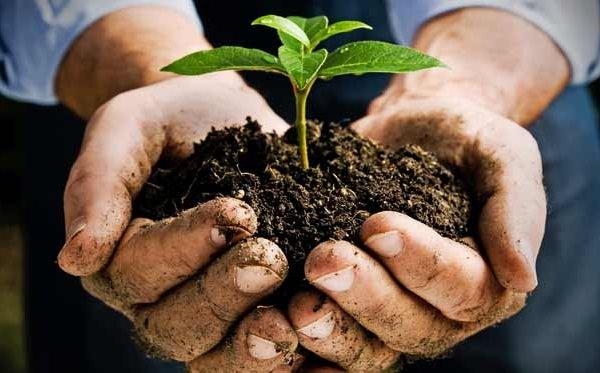
Soil that is light and rich in compost or manure provides plenty of nutrients constantly to the plants. A soil that is rich in organic matter also encourages bacterial activity that promotes soil fertility. Add some compost or manure to the soil when planting your plants and go adding them time to time.
2. Deadhead often

Most plants grow better and have more flowers if their wilted and faded blooms are plucked often. When you see the wilted flowers, remove them, so the plant can direct its energy on other flowers and they will be receiving more nutrients. Wilted flowers waste energy and sap. They also attract insect and pests. Also, by cutting off the spent flowers you prevent plants from seeding.
3. Fertilize the plants
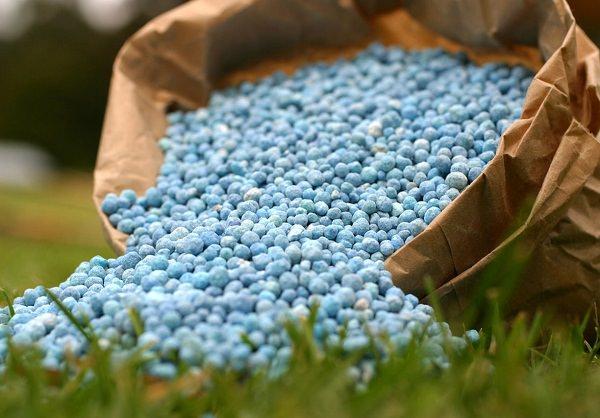
To have more flowers, feed the plants regularly during the growing season with half strength liquid fertilizer, a flowering fertilizer should be used that has more phosphorus than nitrogen, as phosphorus is the element that promotes more flower buds. Also, you can mix time-based fertilizer in the soil at the beginning of the growing season.
4. Provide more sun

Light is essential for the plant’s growth, direct sunlight for several hours a day can be a prerequisite for many plants that come to flower, however, shade loving plants tend to reduce the number of flowers when exposed to more sun.
5. Nurse the roots
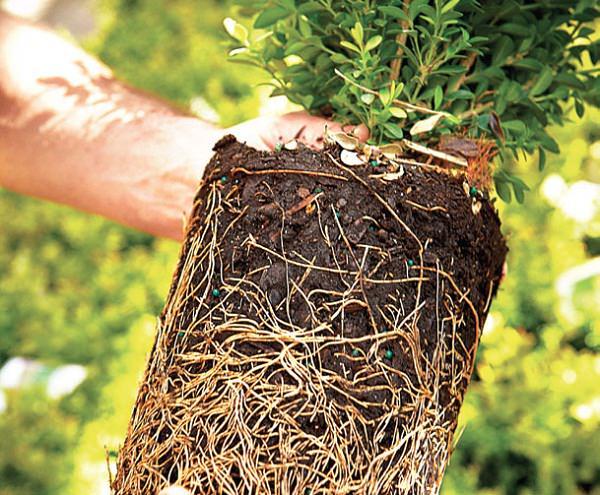
To have healthy plants and abundant blooms– nurse the roots, and remember that it is through them the plants absorb nutrients and water from the soil. When you perform the transplant or when you dig soil around the plant be careful not to cut or damage the roots as if being damaged plant would take a while to recover or it may die.
6. Apply mulch

Plants growing in a mulched soil are usually more vigorous, less prone to pests and diseases.
7. Do moderate watering
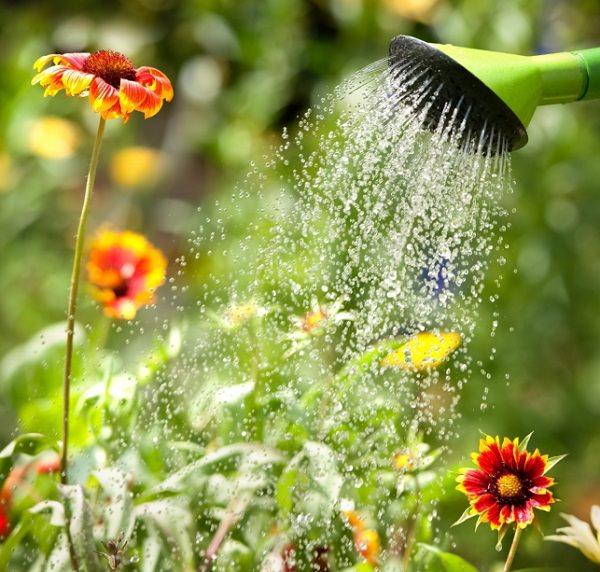
Excess watering tends to favor the development of foliage but can also produce the absence of flowering. Similarly, the lack of water can cause the plant to drop the flower buds. The best way is to do moderate watering (avoiding both overwatering and underwatering) during the flowering season.

Soil that is light and rich in compost or manure provides plenty of nutrients constantly to the plants. A soil that is rich in organic matter also encourages bacterial activity that promotes soil fertility. Add some compost or manure to the soil when planting your plants and go adding them time to time.
2. Deadhead often

Most plants grow better and have more flowers if their wilted and faded blooms are plucked often. When you see the wilted flowers, remove them, so the plant can direct its energy on other flowers and they will be receiving more nutrients. Wilted flowers waste energy and sap. They also attract insect and pests. Also, by cutting off the spent flowers you prevent plants from seeding.
3. Fertilize the plants

To have more flowers, feed the plants regularly during the growing season with half strength liquid fertilizer, a flowering fertilizer should be used that has more phosphorus than nitrogen, as phosphorus is the element that promotes more flower buds. Also, you can mix time-based fertilizer in the soil at the beginning of the growing season.
4. Provide more sun

Light is essential for the plant’s growth, direct sunlight for several hours a day can be a prerequisite for many plants that come to flower, however, shade loving plants tend to reduce the number of flowers when exposed to more sun.
5. Nurse the roots

To have healthy plants and abundant blooms– nurse the roots, and remember that it is through them the plants absorb nutrients and water from the soil. When you perform the transplant or when you dig soil around the plant be careful not to cut or damage the roots as if being damaged plant would take a while to recover or it may die.
6. Apply mulch

Plants growing in a mulched soil are usually more vigorous, less prone to pests and diseases.
7. Do moderate watering

Excess watering tends to favor the development of foliage but can also produce the absence of flowering. Similarly, the lack of water can cause the plant to drop the flower buds. The best way is to do moderate watering (avoiding both overwatering and underwatering) during the flowering season.
1
1
文章
Abigal
2017年05月22日

If you’re searching for the best flowers for full sun then see our list of heat tolerant flowers.
All these flowers can bear the tropical heat and thrive in full sun. You can also grow them in containers. Check out!
Heat Tolerant Flowers1. Pentas

Beautiful pentas flowers attract pollinators like bees, hummingbirds, and sunbirds due to the nectar. Pentas is a tough heat tolerant plant that you can grow in containers. This tropical flower can be grown in USDA Zones 9-11 as perennial, below these zones grow it as an annual.
2. Lantana

Lantana is a common tropical flower that blooms year-round in bright colors like red, yellow, orange, white or pink. It thrives in neglect and heat, it is kind of an afternoon sun plant, the more sun the better. Growing lantana is only possible as an annual plant in mild climates. Learn more about lantana here.
3. Plumbago

Plumbago is a beautiful vine-like African native shrub that thrives in minimal care in subtropical or tropical heat. Its sky blue flowers appear almost year long in right climate. For growing plumbago outside you have to live in USDA Zone 9-11, in cooler zones you’ll need to protect it in winters.
4. Moonflower

The spectacular display of large and fragrant pure white flowers that resembles morning glory and open in the evening. You can grow this vine in a large container. It flowers year-round in subtropics but if you live in a temperate region, grow it as annual. Moonflower plant can reach the height of 6-15 feet in a single season and blooms from summer to fall.
5. Hibiscus

Hibiscus is one the most popular flowering shrubs due to some reasons: It is low maintenance, can be grown in pots easily, available in myriads of colors and for both temperate and tropical climates. Tropical hibiscus can easily handle the temperature above 100 F or more.
Also Read: 44 Best Shrubs for Containers
6. Portulaca (Moss Rose)

Amazing needle-like foliage and bright and colorful small flowers, the portulacas worth a place in your container garden, in hanging baskets or window boxes whether you live in tropics or in temperates. They are one of the toughest plants that never mind the rising tropical heat and drought. Portulacas are annuals everywhere except tropical zones.
7. Gaillardia (Blanket Flower)

Also known as blanket flower, gaillardia is a heat resistant and drought tolerant plant belongs to the sunflower family. The blooms look so attractive and become excellent cut flowers. Grow blanket flower in full sun and provide afternoon shade in summer in peak tropical summer to save it.
8. Calliandra (Powder Puff)

Basically, a small tree that is famous for its puffy flowers that attract wildlife, you can also grow calliandra in a large pot, especially in the colder zones, below 9 to overwinter it indoors as this magnificent plant can’t survive harsh winters.
9. Verbena

There are more than 250 species of verbenas that can be grown in a variety of climates between USDA Zones 4-11. Almost all varieties require sun to thrive and bloom prolifically. Grow verbenas in well-drained soil and provide moderate but regular watering when the soil is dry.
10. Thunbergia Erecta (King’s Mantle)

Also called bush clock vine, thunbergia erecta is a shrub that is native to Africa. If grown in a subtropical or tropical climate (USDA Zone 9-11) this plant never fails from flowering. A year round prolific bloomer thunbergia erecta comes in shades of violet, purple and yellow.
11. Mandevilla

Grow Mandevilla as annual in cooler climates, it is a fast growing heat resistant tropical climber that blooms heavily, flowers are pink, white or red in color and give a tropical look to any garden.
12. Bottlebrush

With its brush like puffy flowers that appear throughout the year, bottlebrush is without a doubt one of the best large flowering shrubs. Bottlebrush can be trained in large containers, although it requires space. If grown in a cooler zone, bring the bottle brush plant indoors before the first frost to overwinter it.
Continue to next page–
All these flowers can bear the tropical heat and thrive in full sun. You can also grow them in containers. Check out!
Heat Tolerant Flowers1. Pentas

Beautiful pentas flowers attract pollinators like bees, hummingbirds, and sunbirds due to the nectar. Pentas is a tough heat tolerant plant that you can grow in containers. This tropical flower can be grown in USDA Zones 9-11 as perennial, below these zones grow it as an annual.
2. Lantana

Lantana is a common tropical flower that blooms year-round in bright colors like red, yellow, orange, white or pink. It thrives in neglect and heat, it is kind of an afternoon sun plant, the more sun the better. Growing lantana is only possible as an annual plant in mild climates. Learn more about lantana here.
3. Plumbago

Plumbago is a beautiful vine-like African native shrub that thrives in minimal care in subtropical or tropical heat. Its sky blue flowers appear almost year long in right climate. For growing plumbago outside you have to live in USDA Zone 9-11, in cooler zones you’ll need to protect it in winters.
4. Moonflower

The spectacular display of large and fragrant pure white flowers that resembles morning glory and open in the evening. You can grow this vine in a large container. It flowers year-round in subtropics but if you live in a temperate region, grow it as annual. Moonflower plant can reach the height of 6-15 feet in a single season and blooms from summer to fall.
5. Hibiscus

Hibiscus is one the most popular flowering shrubs due to some reasons: It is low maintenance, can be grown in pots easily, available in myriads of colors and for both temperate and tropical climates. Tropical hibiscus can easily handle the temperature above 100 F or more.
Also Read: 44 Best Shrubs for Containers
6. Portulaca (Moss Rose)

Amazing needle-like foliage and bright and colorful small flowers, the portulacas worth a place in your container garden, in hanging baskets or window boxes whether you live in tropics or in temperates. They are one of the toughest plants that never mind the rising tropical heat and drought. Portulacas are annuals everywhere except tropical zones.
7. Gaillardia (Blanket Flower)

Also known as blanket flower, gaillardia is a heat resistant and drought tolerant plant belongs to the sunflower family. The blooms look so attractive and become excellent cut flowers. Grow blanket flower in full sun and provide afternoon shade in summer in peak tropical summer to save it.
8. Calliandra (Powder Puff)

Basically, a small tree that is famous for its puffy flowers that attract wildlife, you can also grow calliandra in a large pot, especially in the colder zones, below 9 to overwinter it indoors as this magnificent plant can’t survive harsh winters.
9. Verbena

There are more than 250 species of verbenas that can be grown in a variety of climates between USDA Zones 4-11. Almost all varieties require sun to thrive and bloom prolifically. Grow verbenas in well-drained soil and provide moderate but regular watering when the soil is dry.
10. Thunbergia Erecta (King’s Mantle)

Also called bush clock vine, thunbergia erecta is a shrub that is native to Africa. If grown in a subtropical or tropical climate (USDA Zone 9-11) this plant never fails from flowering. A year round prolific bloomer thunbergia erecta comes in shades of violet, purple and yellow.
11. Mandevilla

Grow Mandevilla as annual in cooler climates, it is a fast growing heat resistant tropical climber that blooms heavily, flowers are pink, white or red in color and give a tropical look to any garden.
12. Bottlebrush

With its brush like puffy flowers that appear throughout the year, bottlebrush is without a doubt one of the best large flowering shrubs. Bottlebrush can be trained in large containers, although it requires space. If grown in a cooler zone, bring the bottle brush plant indoors before the first frost to overwinter it.
Continue to next page–
0
0
文章
Micky
2017年05月22日

Learn how to grow carob tree. Growing carob tree is easy, it’s also grown as ornamental plant in the gardens.
Growing Carob is durable evergreen tree native to the Mediterranean. It has bright, green beautiful foliage, cluster of small flowers and edible pods that are used as cocoa powder substitute.
Carob pods contain about 8% protein, vitamins A and B and about one-third of calories than chocolate.
USDA Zones — 9-11
Propagation Method — Seeds
Difficulty — Easy
Soil pH — 6 – 8
Carob Tree Growing Conditions
Carob tree grows about 10 meter tall (exceptionally 15 m). It is a dioecious tree, which means each tree bears male or female flowers. Carob tree can bear up to 20 F temperature.
Carob tree has a thick and twisted trunk with a rough and brown bark. Its leaves are oval, dark green and shiny that are 12 to 30 centimeters long. Its foliage provides a welcome shade in hot countries. They form a very effective curtain against noise too.
Growing Carob from Seeds
The fresh carob tree seeds germinates quickly and easily. If you don’t find fresh seeds you can grow it from dry seeds which is scarified and soaked in water until they double in size. They can be planted in spring or fall.
Requirements for Growing Carob TreeSoil
The carob tree is a tree that grows in many soil types including hillsides with deep sandy soil or loam, even arid. It does not tolerate acidic or wet soils but requires good drainage.
Sun
Carob tree needs full sun and a position sheltered from wind.
Watering
It is resistant to drought. However, watering must be provided during dry seasons, especially if the tree is grown for its fruit.
Carob Tree Care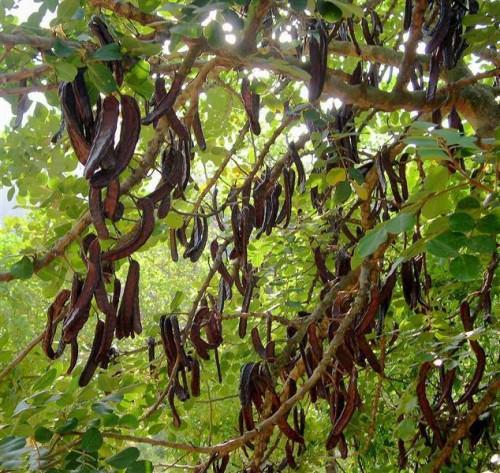
Once fully developed carob tree can withstand temperatures up to -7 ° C, but frost during flowering period can reduce or sometimes prevent fruiting. The tree is ideally grown in regions with a Mediterranean climate.
Fertilizer
Fertilizer is often unnecessary for carob trees. However, a 8-3-9 fertilizer can be applied occasionally to give plant a boost.
Pruning
Growing Carob is durable evergreen tree native to the Mediterranean. It has bright, green beautiful foliage, cluster of small flowers and edible pods that are used as cocoa powder substitute.
Carob pods contain about 8% protein, vitamins A and B and about one-third of calories than chocolate.

USDA Zones — 9-11
Propagation Method — Seeds
Difficulty — Easy
Soil pH — 6 – 8
Carob Tree Growing Conditions
Carob tree grows about 10 meter tall (exceptionally 15 m). It is a dioecious tree, which means each tree bears male or female flowers. Carob tree can bear up to 20 F temperature.
Carob tree has a thick and twisted trunk with a rough and brown bark. Its leaves are oval, dark green and shiny that are 12 to 30 centimeters long. Its foliage provides a welcome shade in hot countries. They form a very effective curtain against noise too.
Growing Carob from Seeds
The fresh carob tree seeds germinates quickly and easily. If you don’t find fresh seeds you can grow it from dry seeds which is scarified and soaked in water until they double in size. They can be planted in spring or fall.
Requirements for Growing Carob TreeSoil
The carob tree is a tree that grows in many soil types including hillsides with deep sandy soil or loam, even arid. It does not tolerate acidic or wet soils but requires good drainage.
Sun
Carob tree needs full sun and a position sheltered from wind.
Watering
It is resistant to drought. However, watering must be provided during dry seasons, especially if the tree is grown for its fruit.
Carob Tree Care

Once fully developed carob tree can withstand temperatures up to -7 ° C, but frost during flowering period can reduce or sometimes prevent fruiting. The tree is ideally grown in regions with a Mediterranean climate.
Fertilizer
Fertilizer is often unnecessary for carob trees. However, a 8-3-9 fertilizer can be applied occasionally to give plant a boost.
Pruning
0
0
求助
Aesthesiiick
2017年05月12日

does anyone know what this succulent / cactus is? leaves are thick and a bit felt like, and thorns are tiny and appear in bunches around the upper half of the plant. Plant is dark green in colour and apparently flowers form at the top in a circle. flowers are red supposedly #cactus #cactus #succulent #suncculents
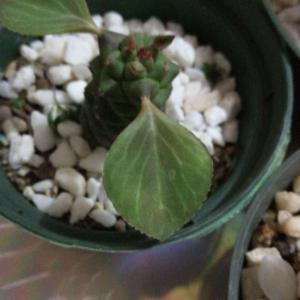

1
0
meriunkat:Monadenium Ritchiei ssp. Nymbayense
meriunkat:how interesting
Aesthesiiick:and another
Aesthesiiick:some more pictures




